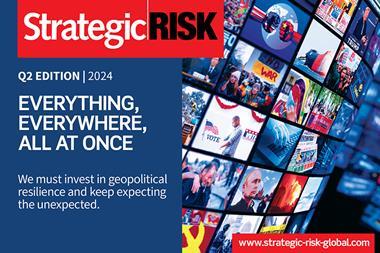Caroline Woolley explains why it’s much better to play ‘let’s pretend you have a loss’, than trying to deal with expectation gaps after an event
Traditional BI policies rely on a property damage (PD) trigger, and were never designed to pick up the non-damage risks that have been creeping into those policies over recent years.
As Forensic accountants we assist in the quantification of insured BI loss, after the event. At Meaden & Moore we work on behalf of Insurers, however, my previous experience in claims preparation for policyholders strengthens my independence, and means I also act as a single expert.
I am also an advocate for pre-loss analysis, and always have been, as it is a key solution to the expectation gap issue. I’d rather be sitting around having a cup of tea playing ‘let’s pretend you have a loss’ - when collaboration and potential is in abundance - rather than trying to deal with expectation gaps after a loss.
Using insurers/brokers/loss adjusters/forensic accountants who deal with major loss every day to assist in this exercise means the potential loss to the business can be quantified, and policies can be tested (and fully understood), without the need of hindsight.
Is non-damage BI insurable?
Insurance is often referred to as part of risk transfer, but it is questionable whether any risks (particularly non-damage ones) can be handed over.
Having worked with insurers in the past, in the development of specialist non-damage BI policies, I know that pandemic is usually excluded. More recently, it has been said that such a systemic risk belongs with governments rather than necessarily insurers, and therefore more exclusions will come.
To some extent the insurance industry was ahead of the curve, with non-damage BI policies being developed (particularly in relation to supply chain and cyber risk), although data on the risks and losses was limited, leaving pricing difficult.
Back in 2013 at a FERMA conference, I was part of a panel discussion titled ‘Non-Physical Damage business interruption – what can you do?’ Non-damage policies had been available for some time, but there was not necessarily a significant uptake.
A well-known risk manager on the panel - Ingo Zimmerman - identified that we shouldn’t talk about insurance as risk transfer. ‘I can’t transfer my risk, it remains with me, I must manage my own risk’, he said.
Insurance can be a lifeline to a business, by providing the essential funds required to keep it going in its time of need. However, it’s not just about the money, it’s how it’s spent and what actions are taken.
The reaction of a business in the immediate response stage can dictate whether its recovery will be successful, or not. Without stating the obvious, the solution must include a combination of risk management and insurance cover, but that is not where the journey begins.
Help…
The risks faced by businesses are vast, we can’t predict all of them. Coronavirus has shown us that even if we can predict certain risks, we can’t always estimate their severity on the wider world.
Our determination of cause might be somewhat limited, but what we can do is look at the effect that those risks might have first. If we take any event that interrupts business, we can quantify the impact of an interruption through in-depth knowledge of a business, how it operates and what income is at risk.
Back to that pre-loss analysis. I’m an accountant, so I will always come back to the numbers, but numbers are universally understood, and are the international language of business.
Potential losses must be quantified to help determine the possible severity of impact and therefore the necessary fair allocation of resources for resilience, risk management and then insurance.
Pre-loss BI calculations are key to understanding if insurance is value for money. This quantification of BI risk also helps in the consideration of tolerance and performance from an ‘operational resilience’ regulatory perspective.
This is where the risk managers, brokers, Insurers and their service providers like Meaden & Moore, can work together. Some risks will be insured, some will be insurable but others will remain uninsurable. Those risks can only be managed… for the moment anyway.

Caroline Woolley is director and practice leader, Investigative Accounting Group, Meaden & Moore International




















No comments yet